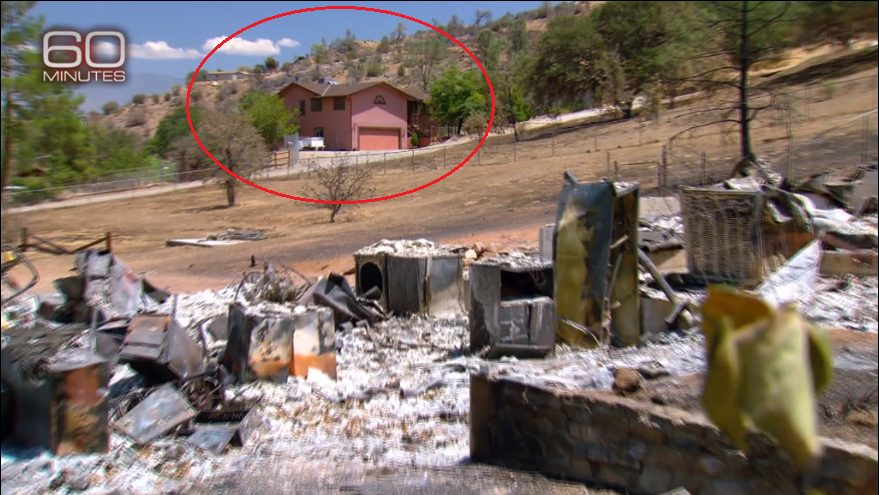CalFIRE's "Reverse 9-1-1" Failure
 Newer tech and more channels of communication brings people together and grows distance between them. The transcript below shows one of many communication breakdowns in the deadly Northern California wildfires last fall.
Newer tech and more channels of communication brings people together and grows distance between them. The transcript below shows one of many communication breakdowns in the deadly Northern California wildfires last fall.But first, a quote from one resident shows how news expectations have changed dramatically in the last decade.
Jason Meek, who lost his Santa Rosa home to the fires, told Reveal reporters:
“Like, we get all these text messages from CNN and Washington Post, or, you know, all the media that’s telling us what’s going on, on a minute-by-minute basis, in the world. But here – my world was burning, and I heard nothing,” he said. “We deserved to know that there was a fire.”NPR's California Report partnered with Reveal News for an investigation of last fall's fires. They probed communiques between county operators, first responders, electric companies and residents. Reporters from NPR and Reveal culled hundreds of 9-1-1 recordings. A section of the "My World Was Burning" episode, 15 minutes in, is transcribed here:
(Ringing...)Seven people died or were fatally injured in that time, Reveal said.
Operator: "Hi it's Michelle."
CalFIRE Employee: "Hey. I need a 'Reverse 9-1-1' done."
Operator: "OK."
CalFIRE: "So CalFire needs it for the Calistoga area: mandatory evacuations, ..."
NPR Host Sasha Khokha: In this game of telephone, you can hear a lot go wrong. This CalFIRE employee is asking a Napa operator for a "Reverse 9-1-1." That's an evacuation alert that can target specific neighborhoods, warning people: FIRE IS APPROACHING. It calls home phones. But only about half of Americans have landlines these days.
Operator: "I'm sorry what's your question? [inaudible]"
CalFIRE: "I need you guys to send out a 'Reverse 9-1-1' so we can tell them to evacuate."
Operator: "OK I'm just not, I'm not familiar with what a 'Reverse 9-1-1' is. I'm sorry."
NPR's Khokha: Here is another place we hear the system breaking down. The operator doesn't even know what CalFIRE is talking about. But that's because each California county, there are 58, uses different technologies with different names, to alert people. To CalFIRE it's a "Reverse 9-1-1." To Napa, it's "Nixel."
Operator: "OK. It needs to go out to the public and everyone?"
CalFIRE: "Yeah it needs to go to all their phones, landline and everything."
Operator: "Oh, landline. OK."
NPR's Khokha: CalFIRE is requesting an evacuation order. But it still takes an hour before law enforcement officials in Napa issue text alerts to the public. They won't call people on their landlines until the next day.
This entire episode narrated a timeline of the fires' spread which ultimately killed 42 civilians and two firefighters. Age diversity, which retains institutional knowledge, could have boost quality of output in that situation. And language, specifically names of technologies, needed a human's intelligence, "human AI" to connect objective with action.
Reveal's timeline of alert requests and alert dispatches show that county operators waited up to three hours after an alert request to even text residents, a window in which more people died.
State government is already taking action to not repeat last fall's mistakes. County operators are being re-trained. But the state’s Office of Emergency Services director, Marc Ghilarducci, said this patchwork of technologies is a problem:
Ghilarducci argued that in addition to government improving its procedures, individuals across the United States also need to understand the risks of where they live and be prepared to take care of their families when a disaster hits.The rest of the broadcast from California Report's exceptional episode "My World Was Burning: The North Bay Fires and What Went Wrong" published March 9, 2018 can be found at kqed.org, here.
“If you live in a disaster-prone state like California … you may be in earthquake country or you may be in fire country. You may be in a flood area,” he said. “You need to have a plan.”
-------------
Further Reading:
We transcribed Timothy Snyder's lecture where he said, "Because what has happened we’ve shifted from being a country where there were lots of regional and local newspapers which provided you know an imperfect but nevertheless a shaded a variegated a specific view of daily life of people. We’ve shifted from that to something else. We’ve shifted to this place where there is one media. And we’re for it or against it. Or whatever." Media and 'Variegated' Media: www.offlinereport.net

This work by AJ Fish is licensed under a Creative Commons Attribution-NonCommercial 4.0 International License.


